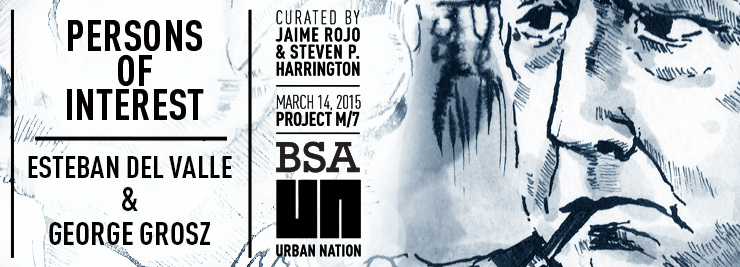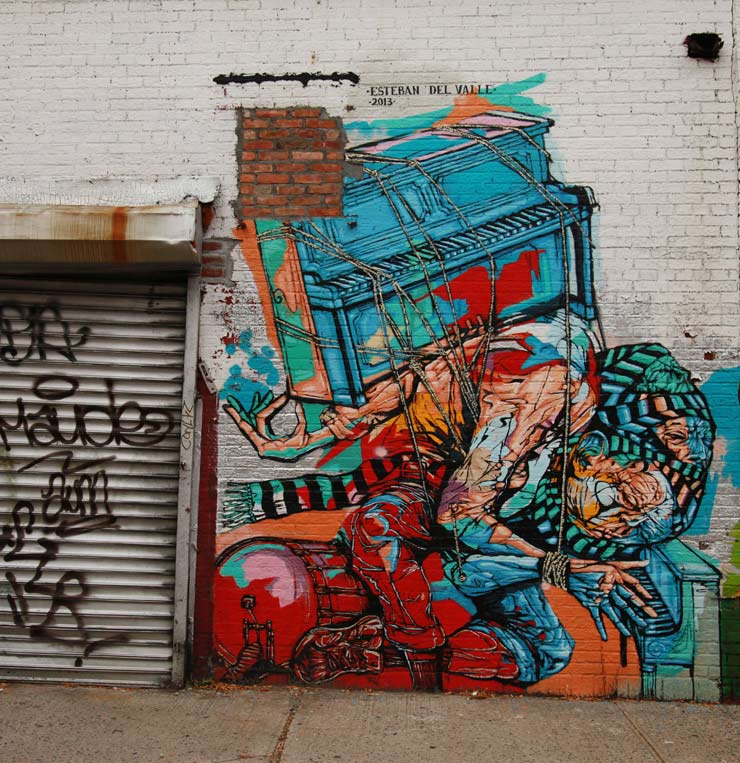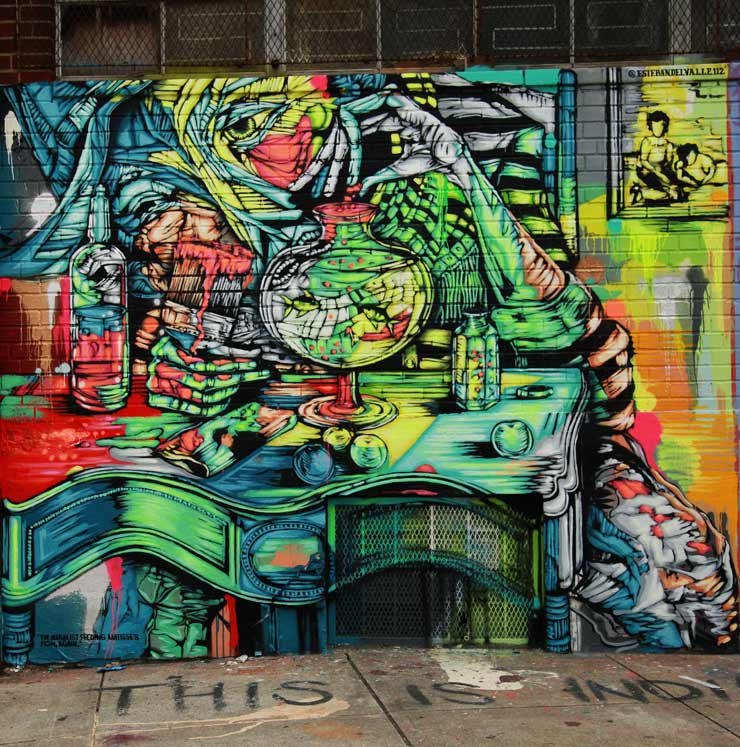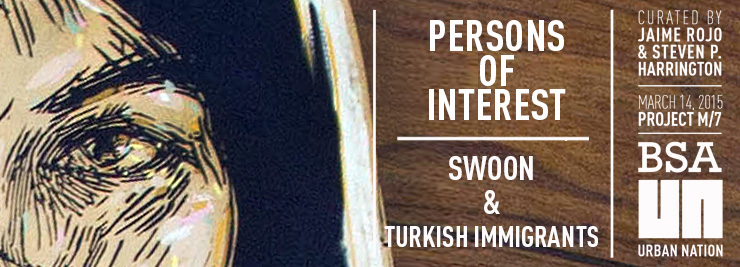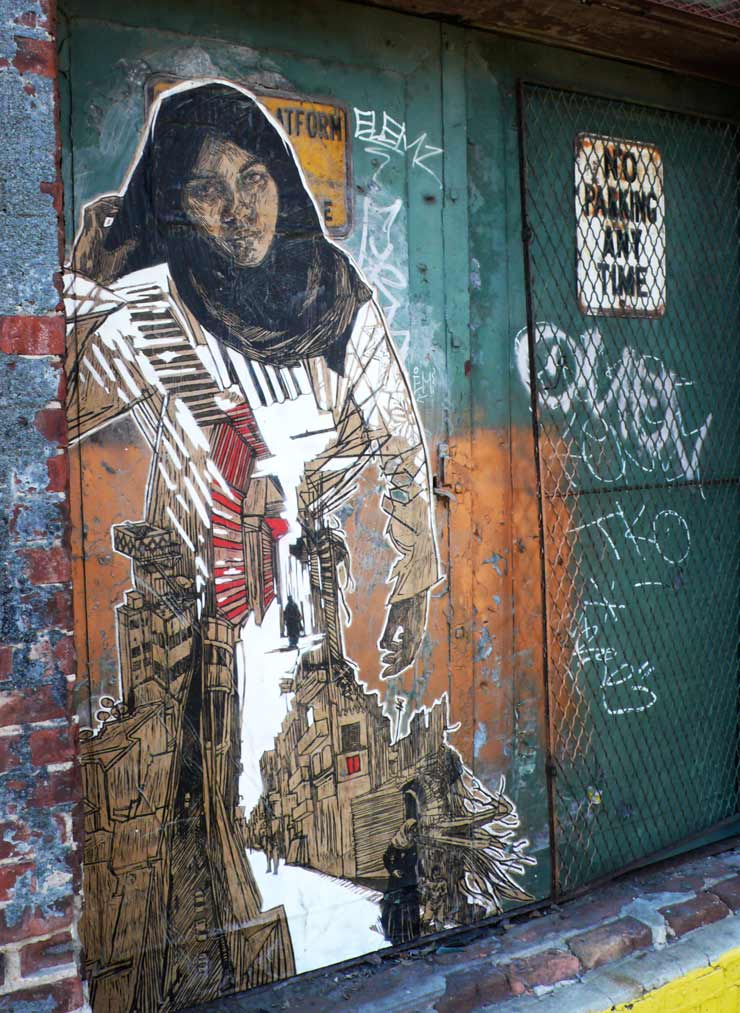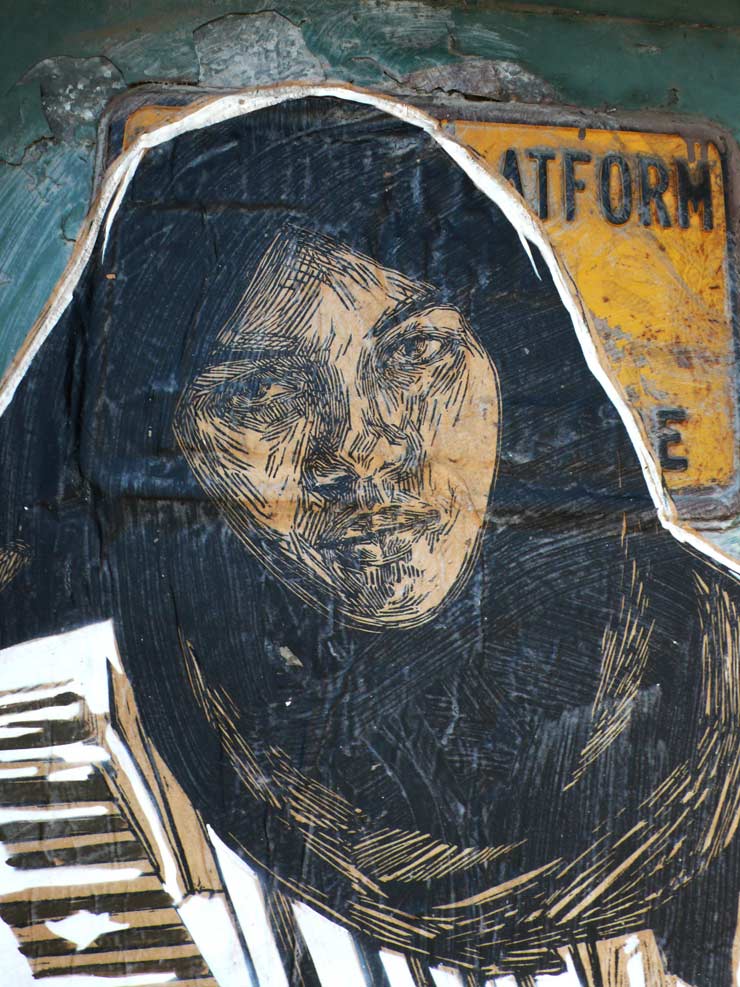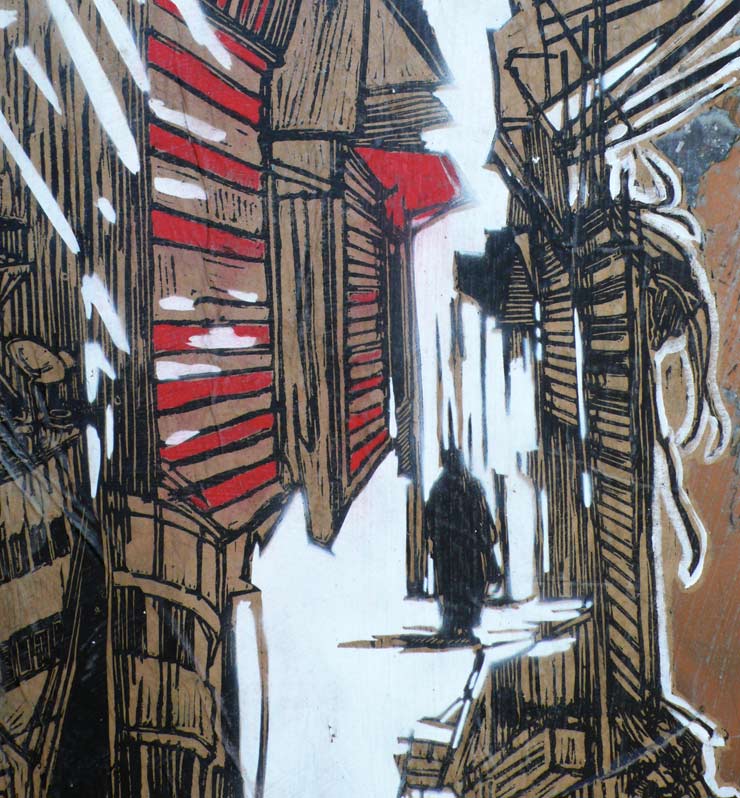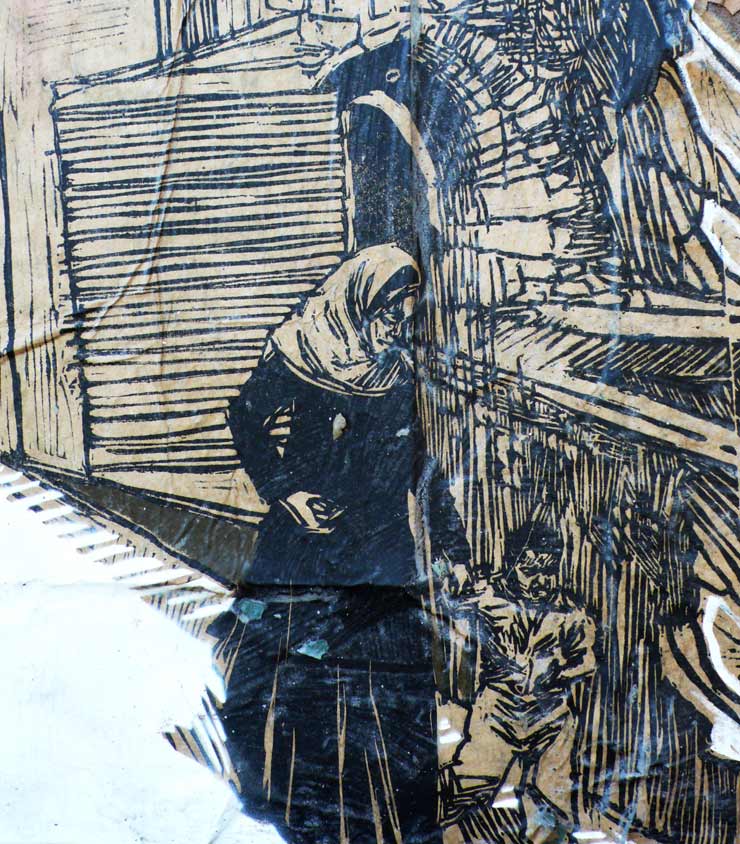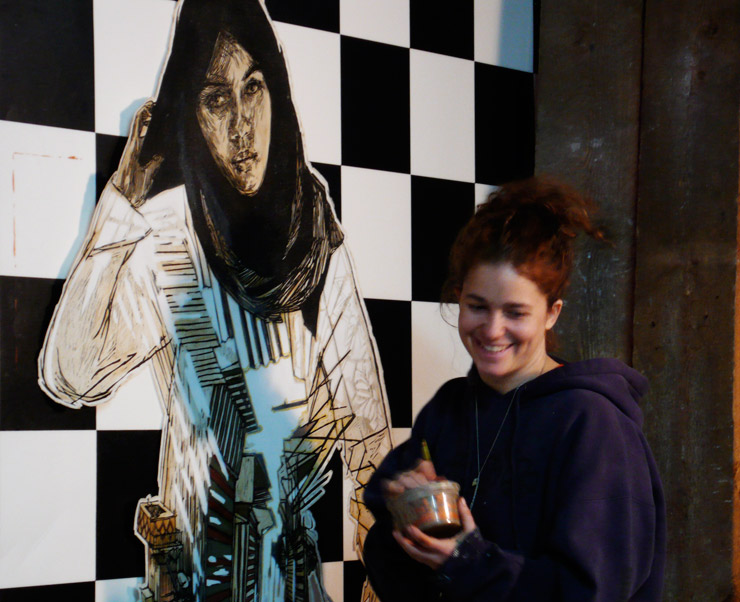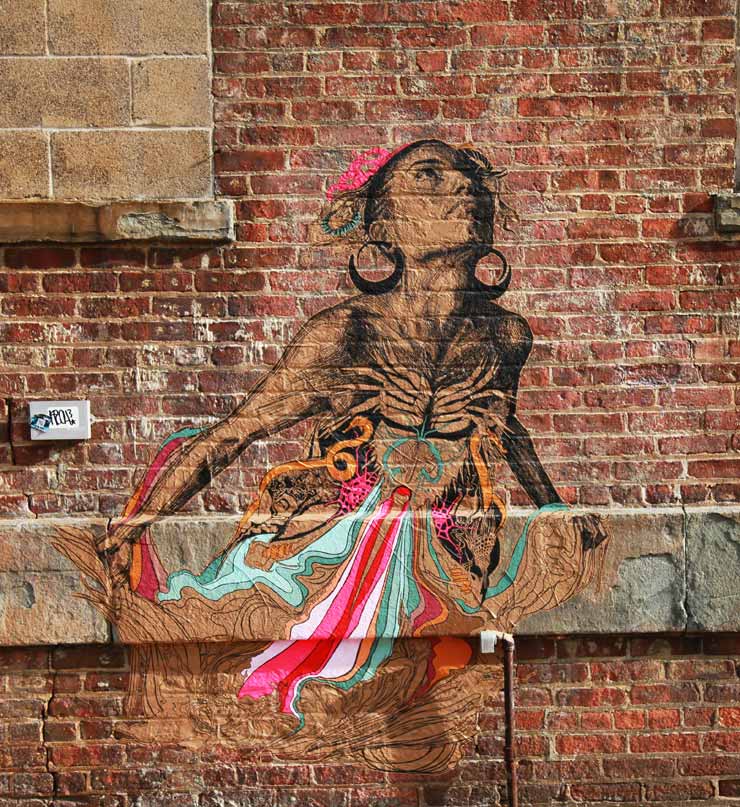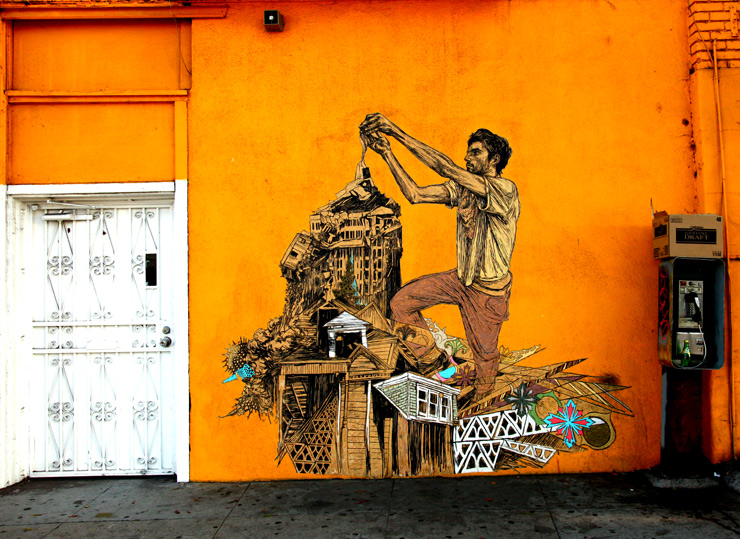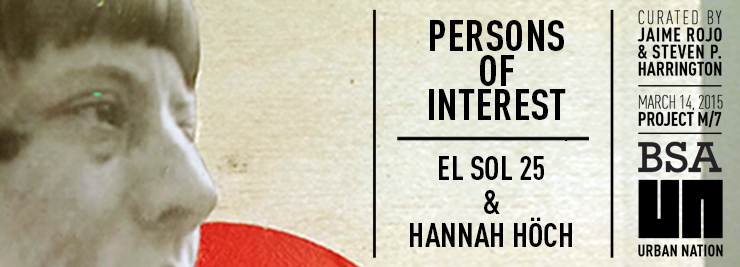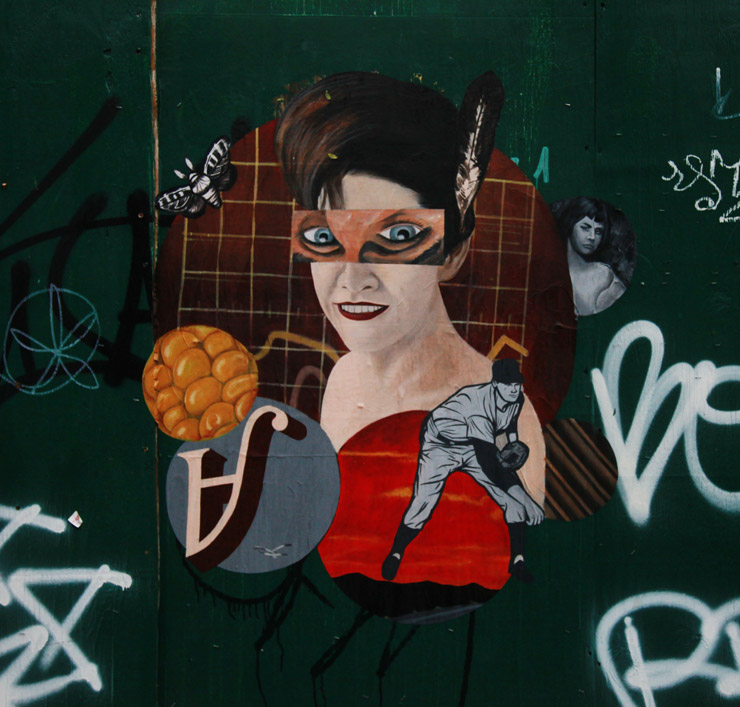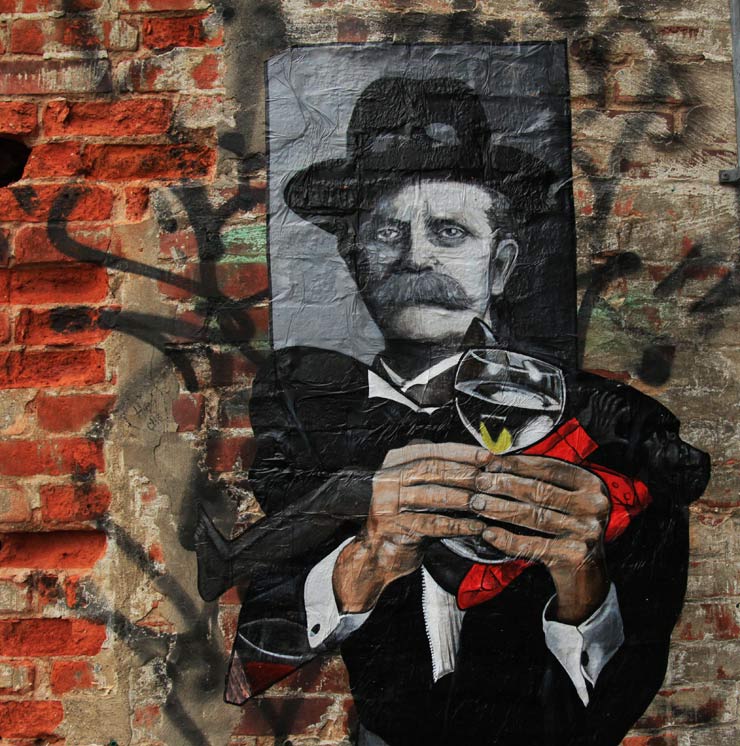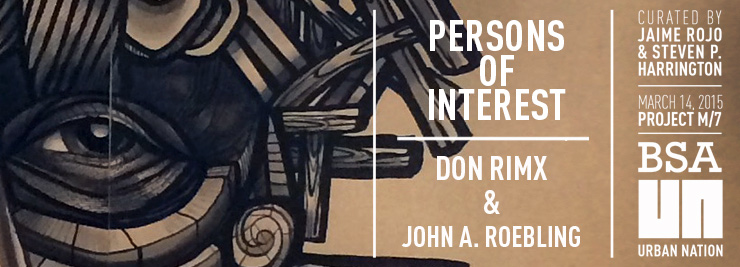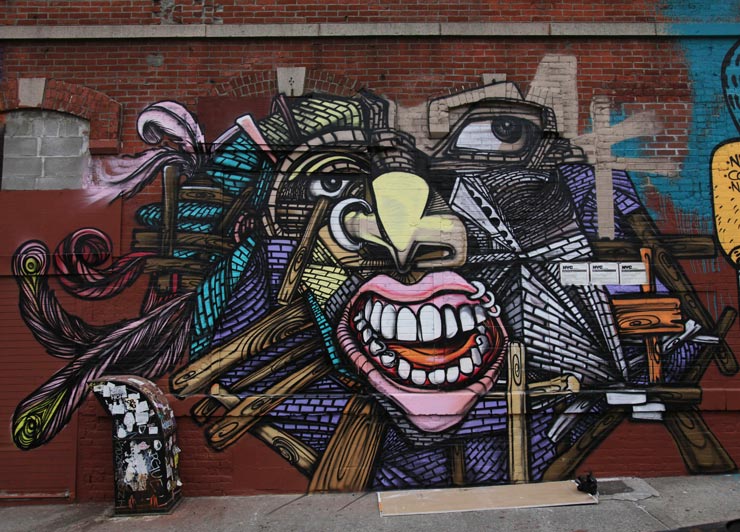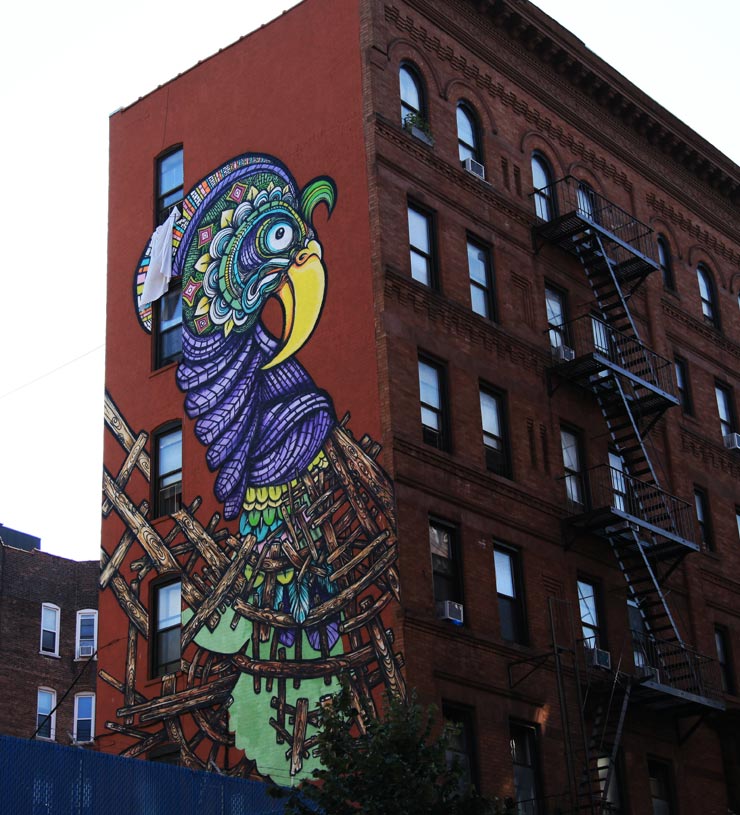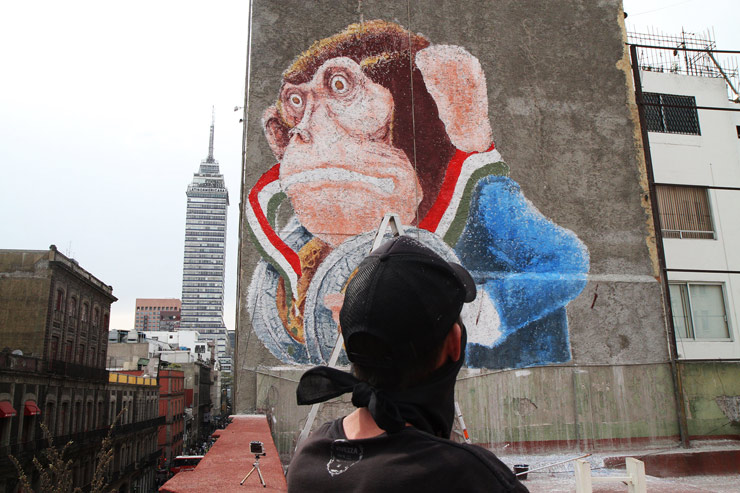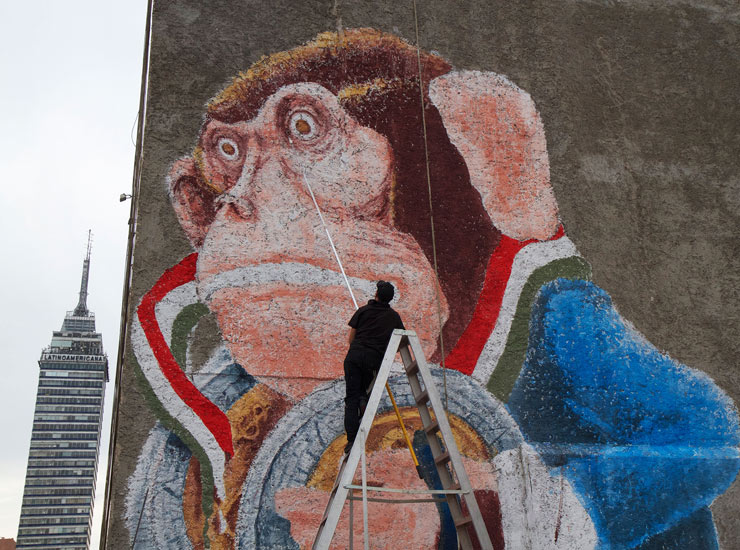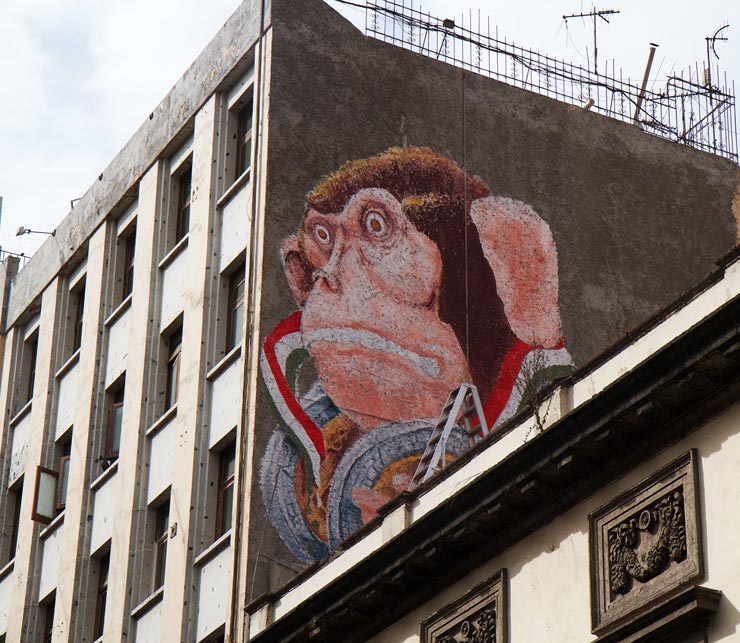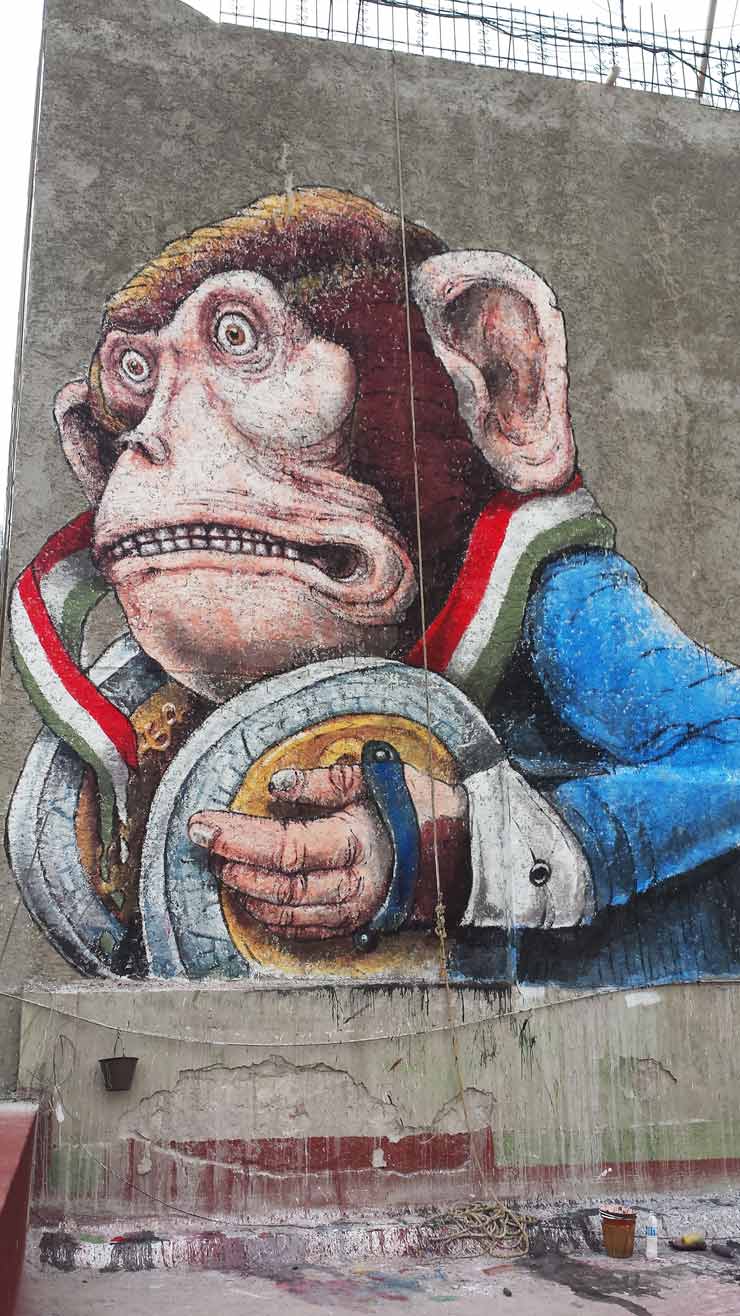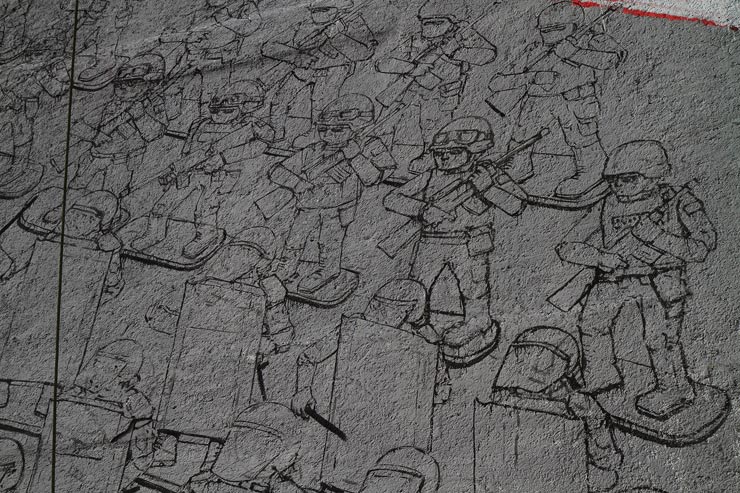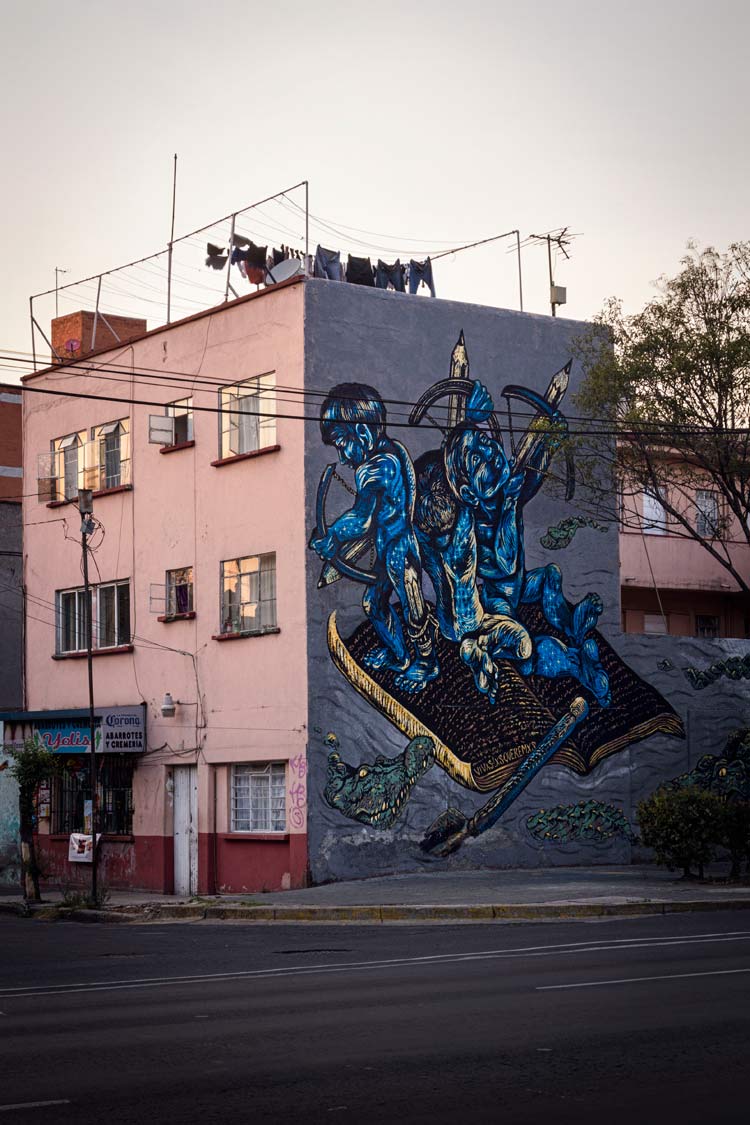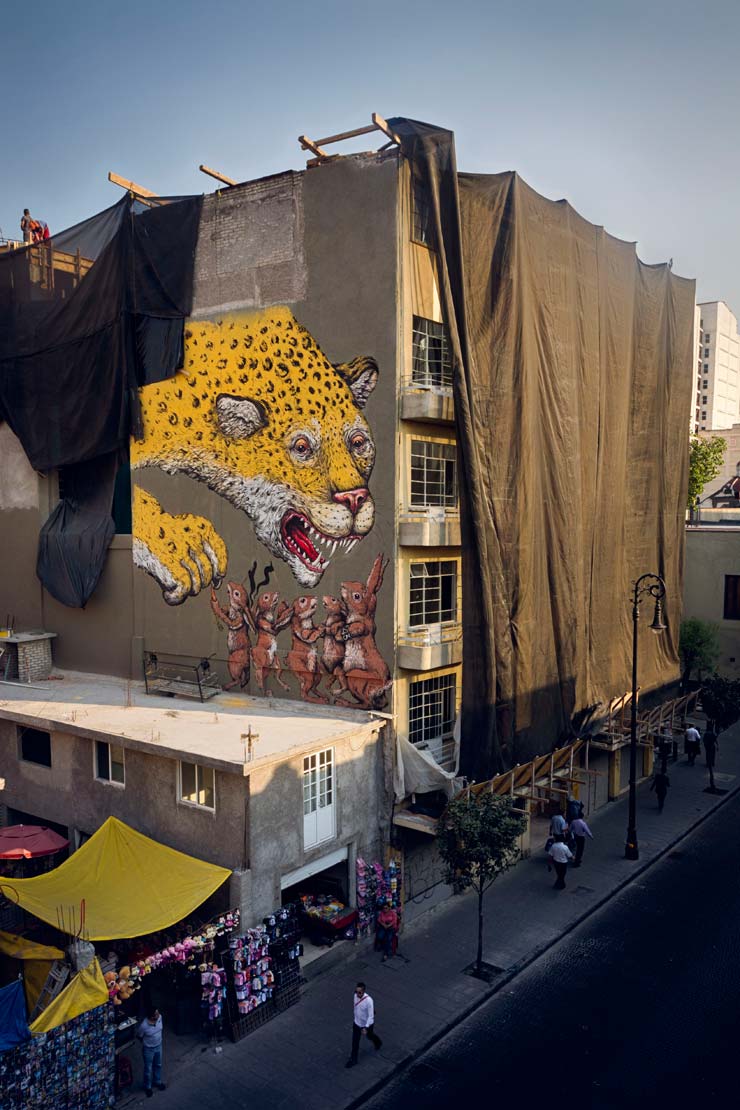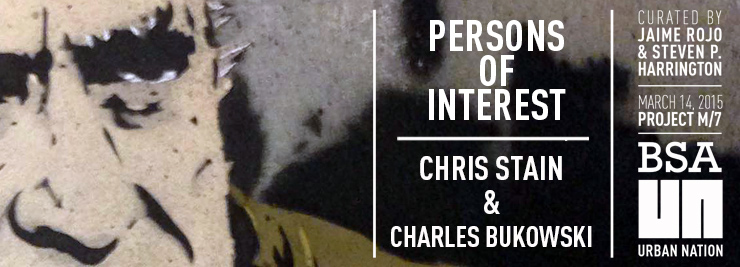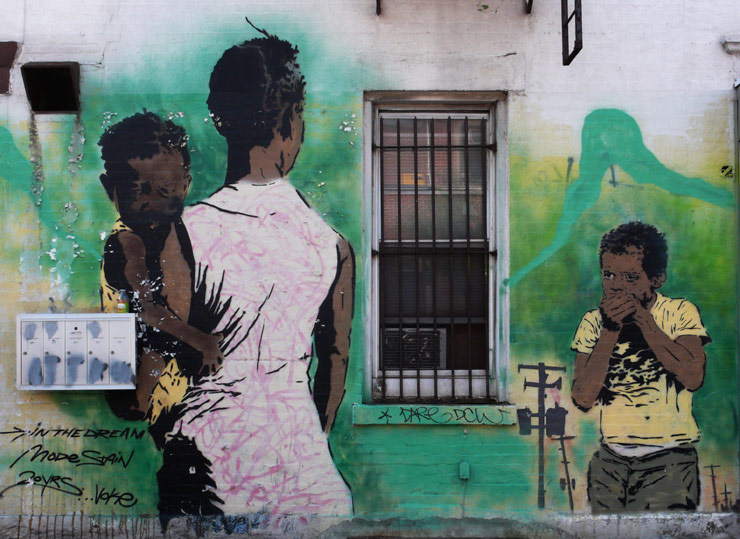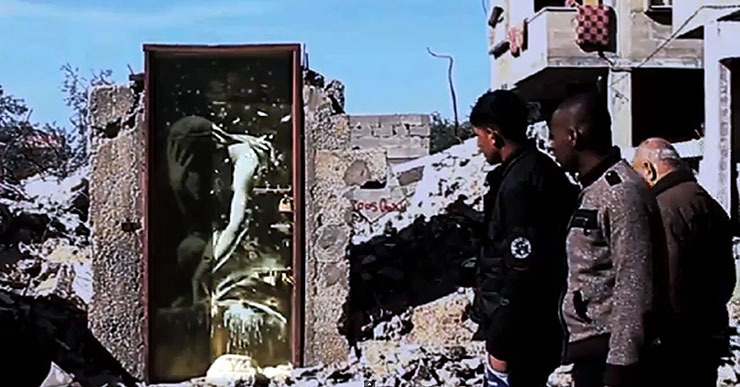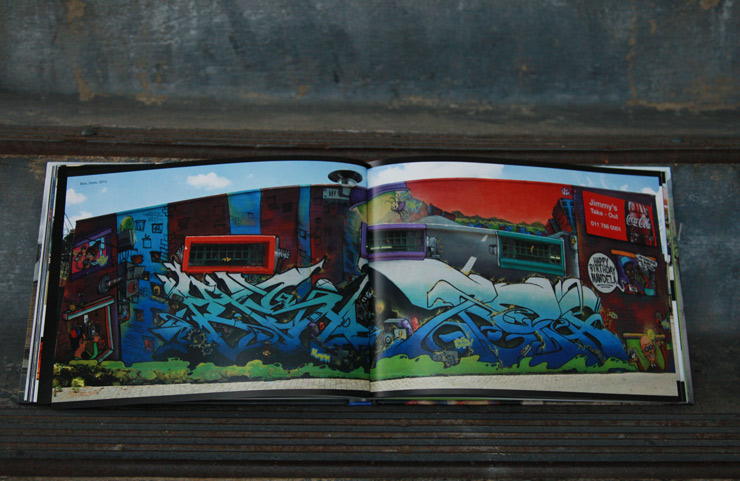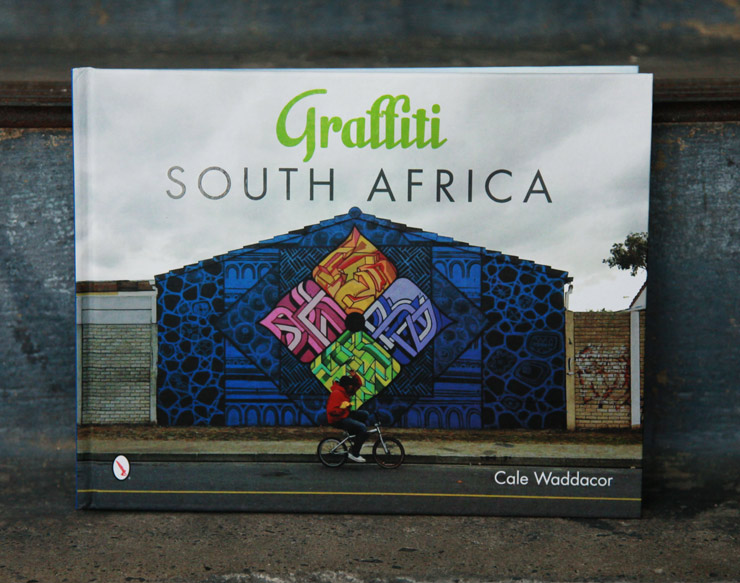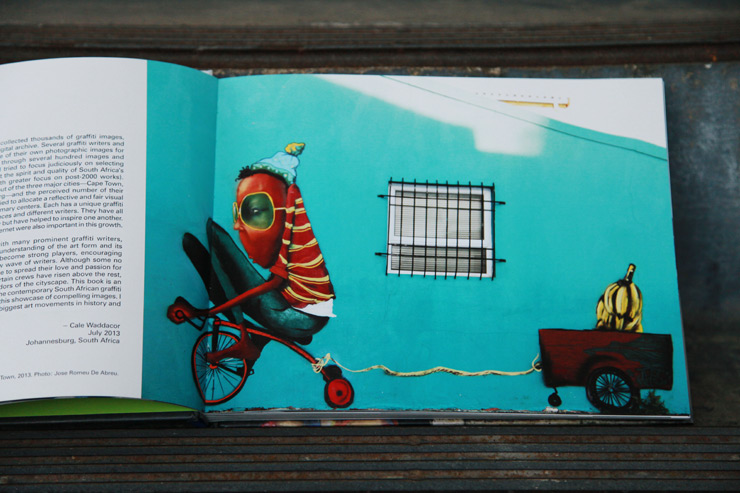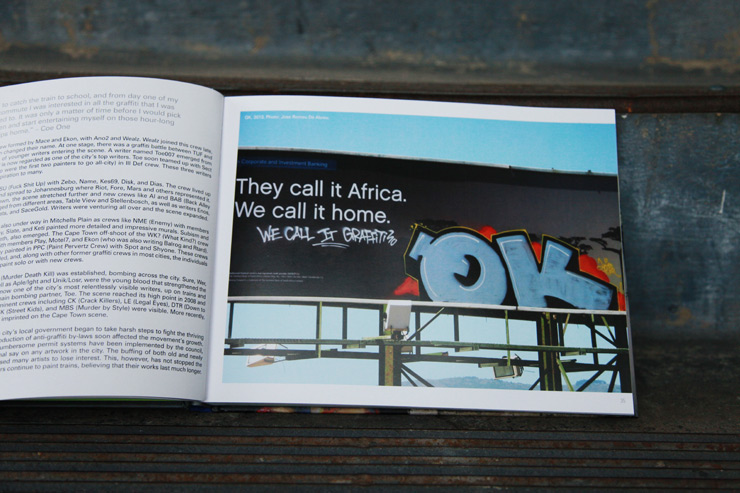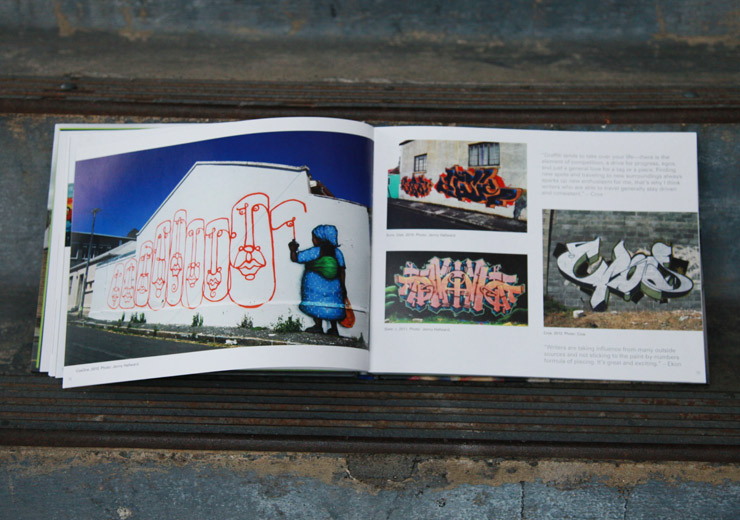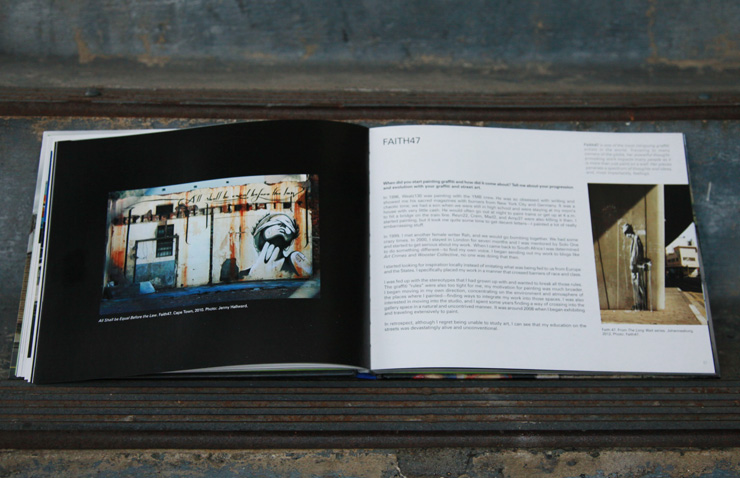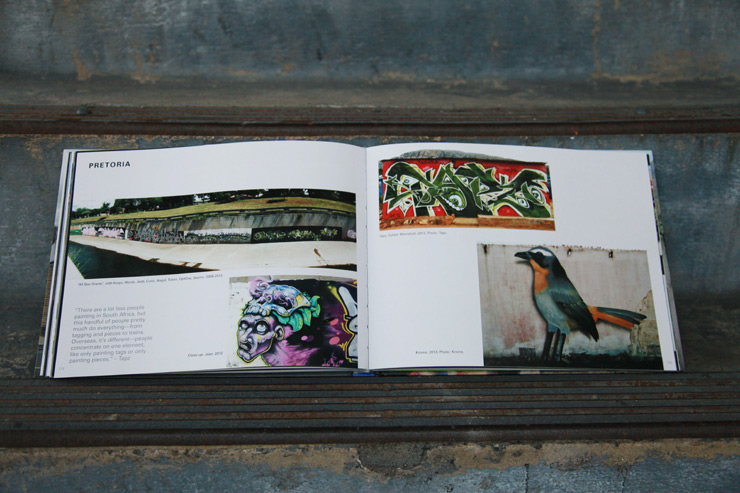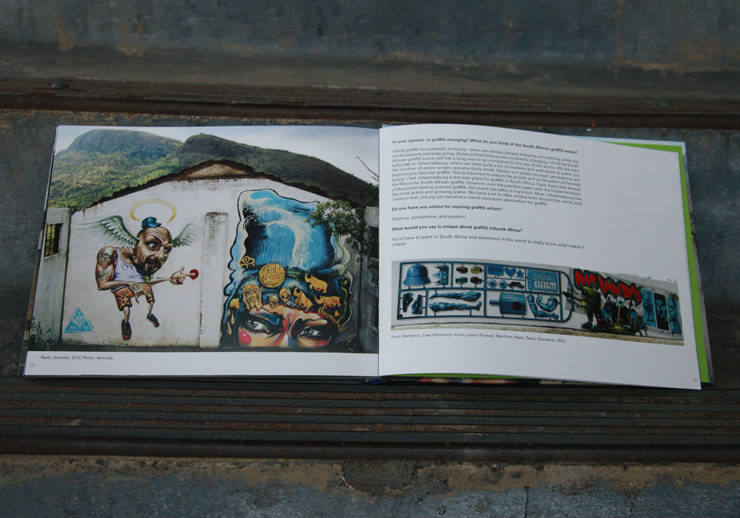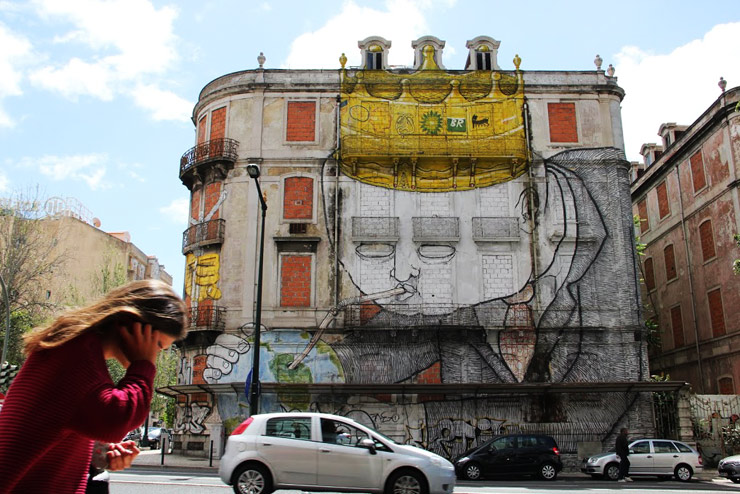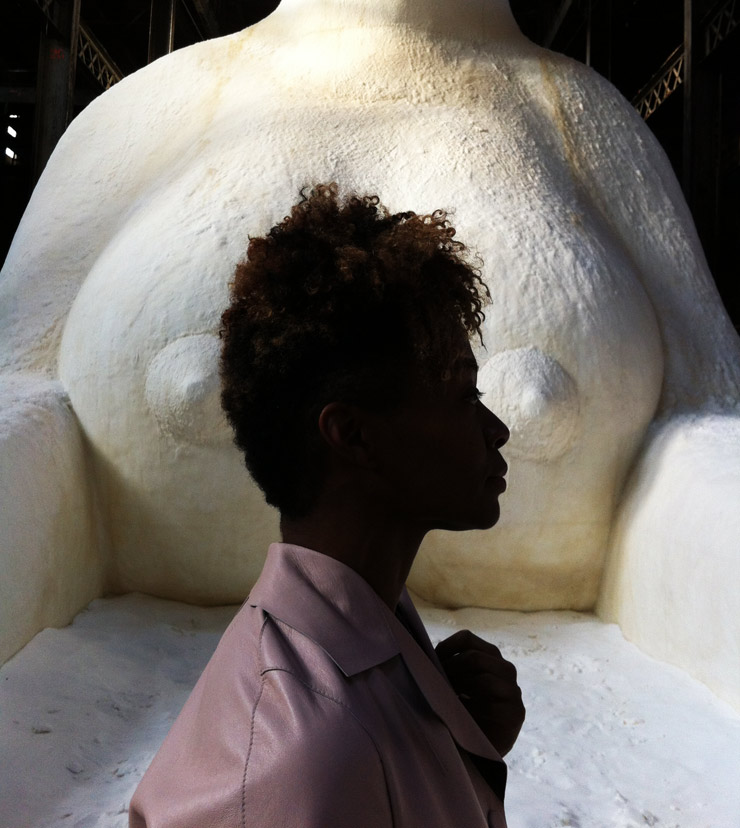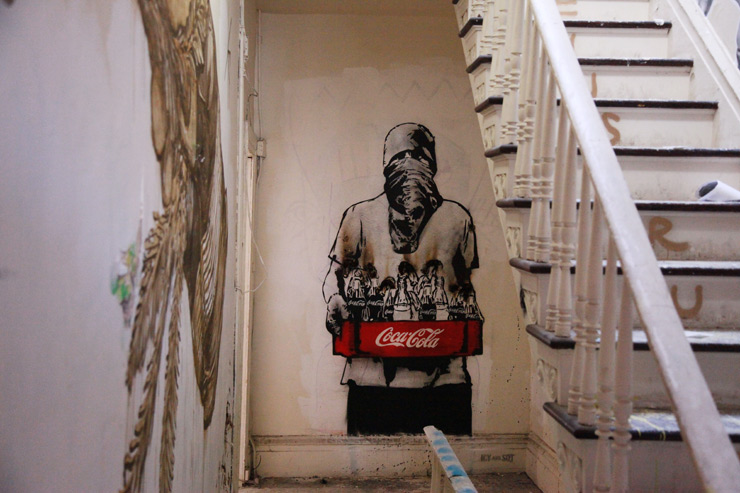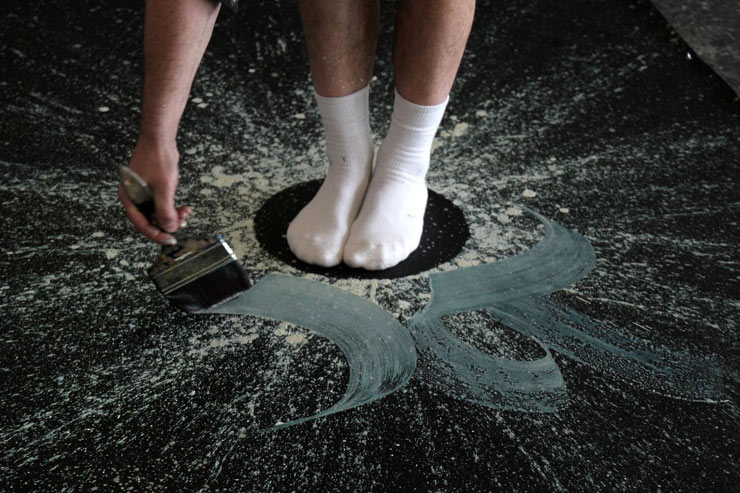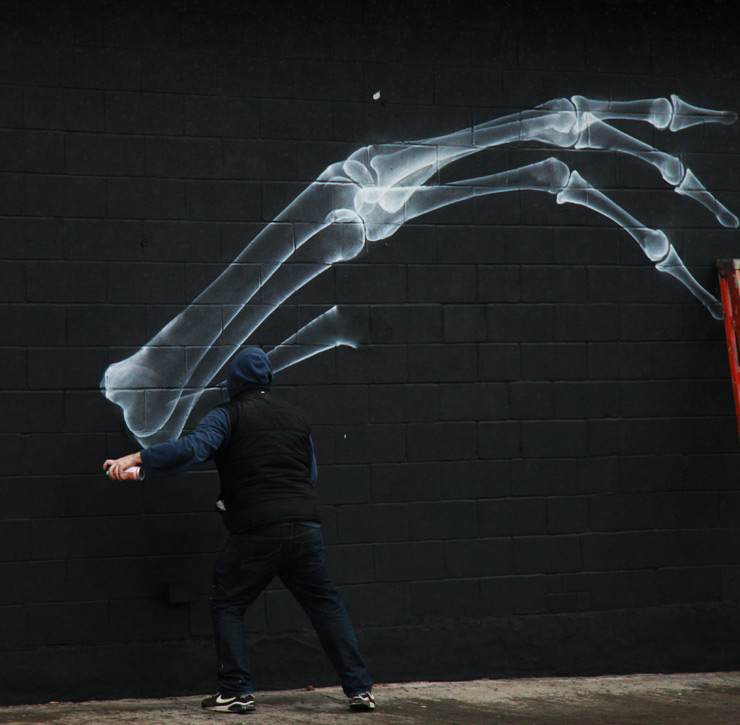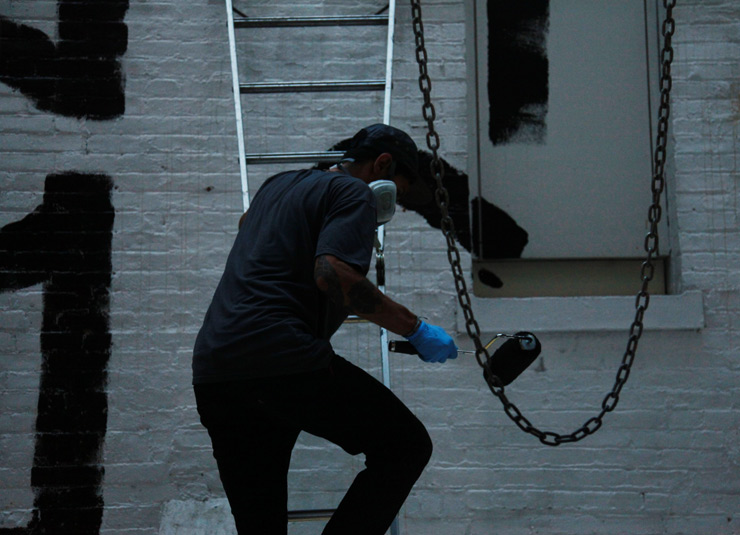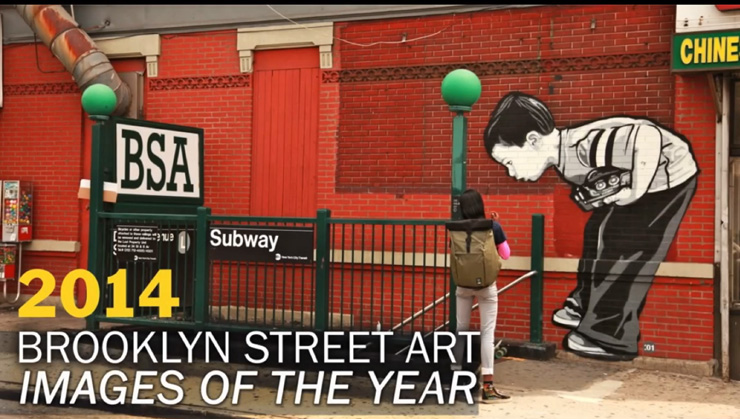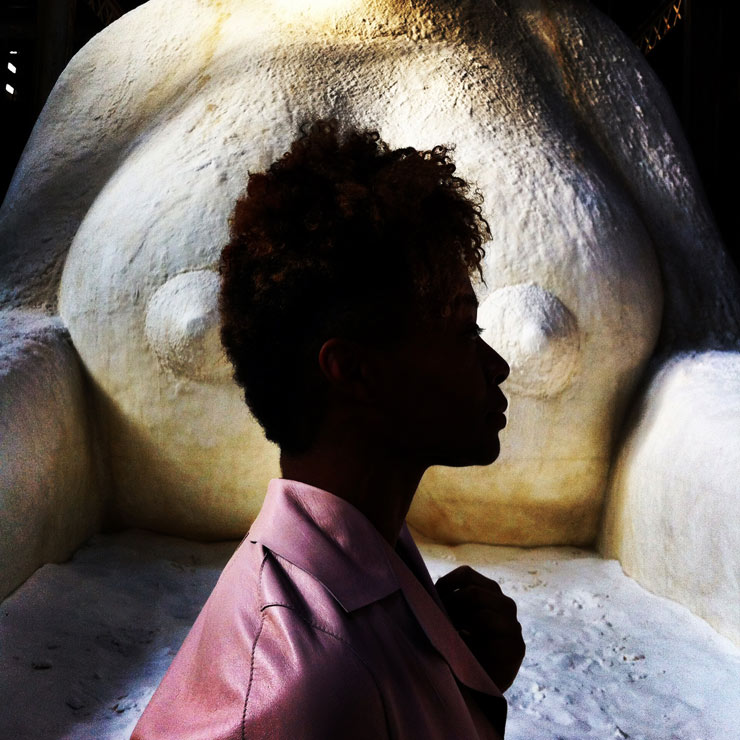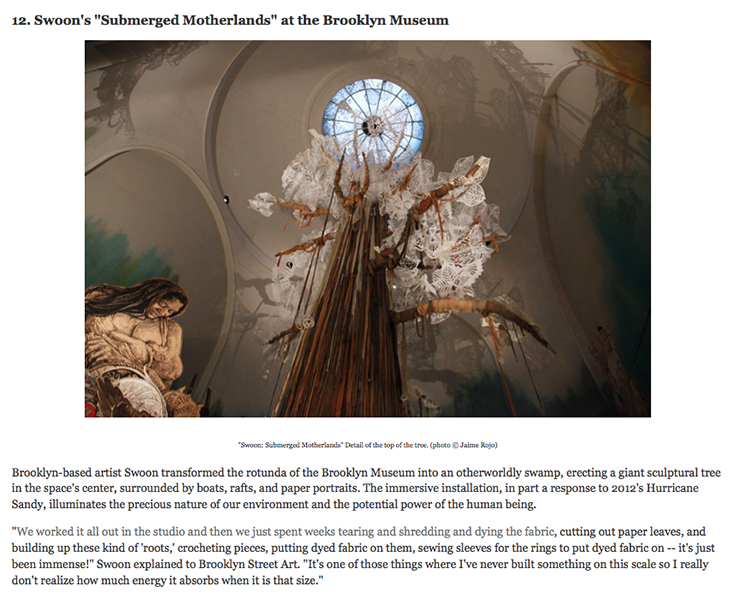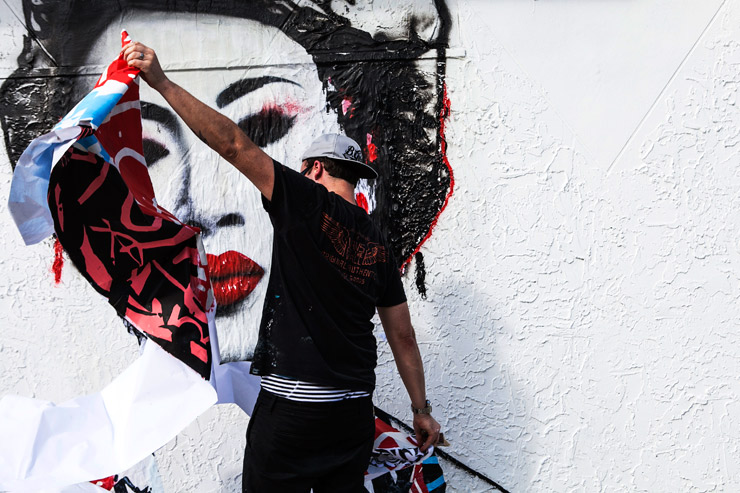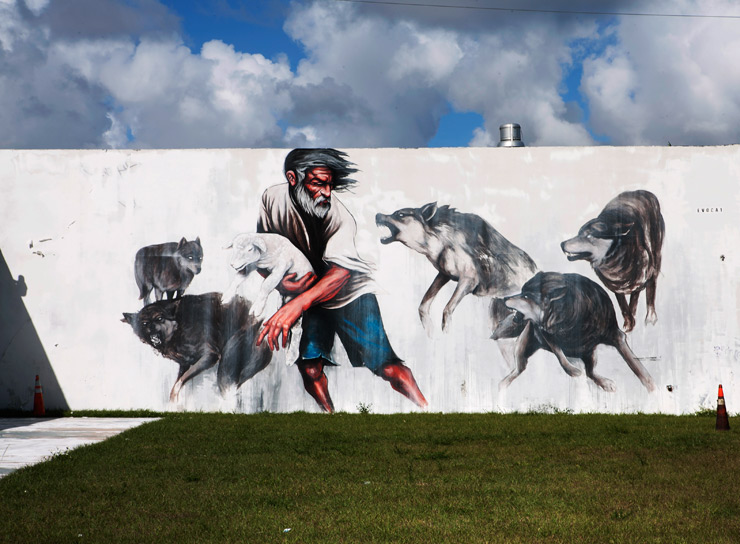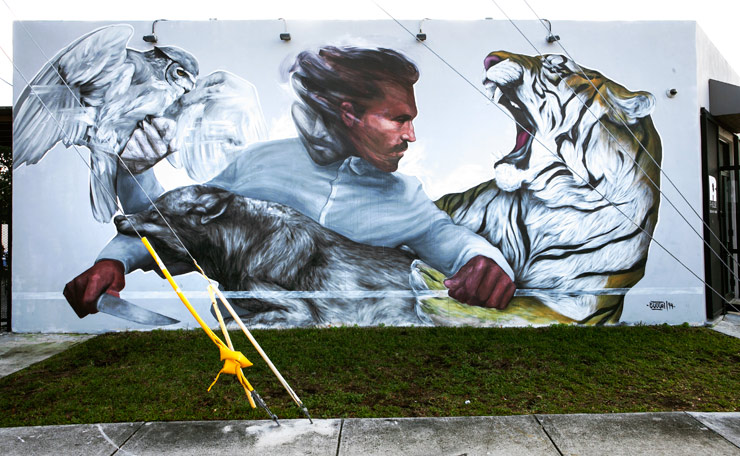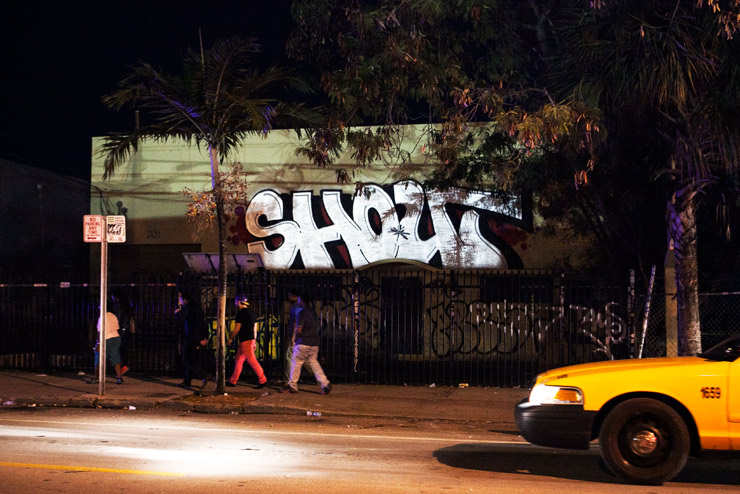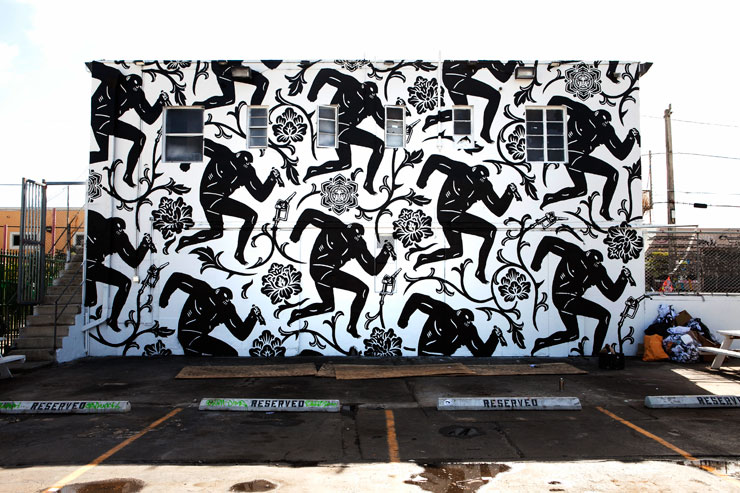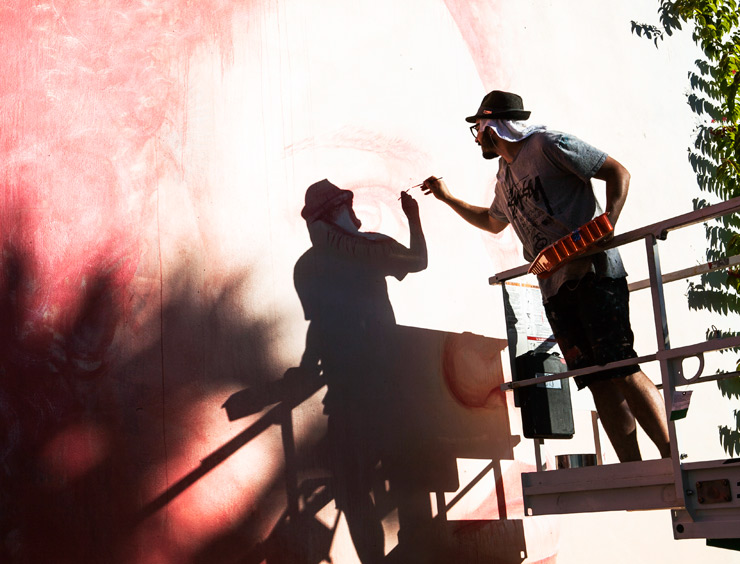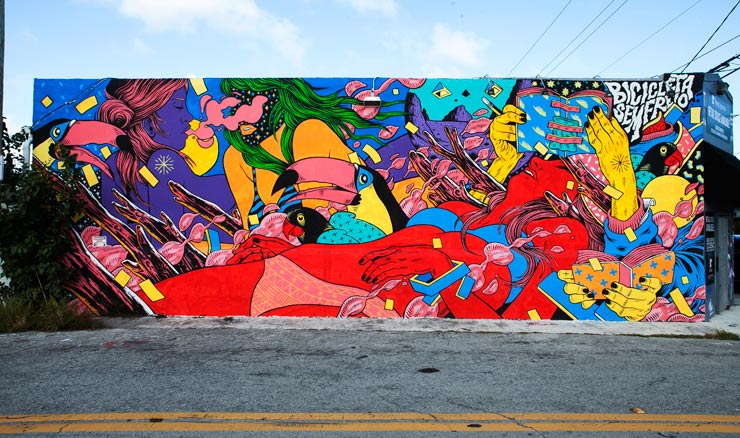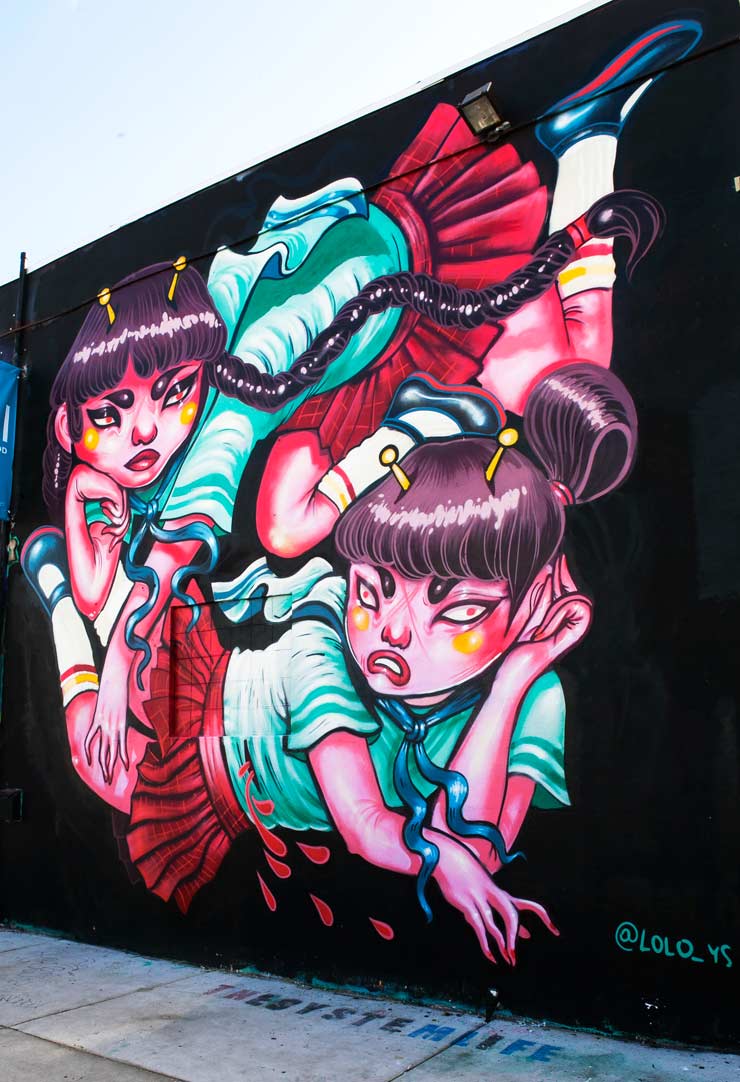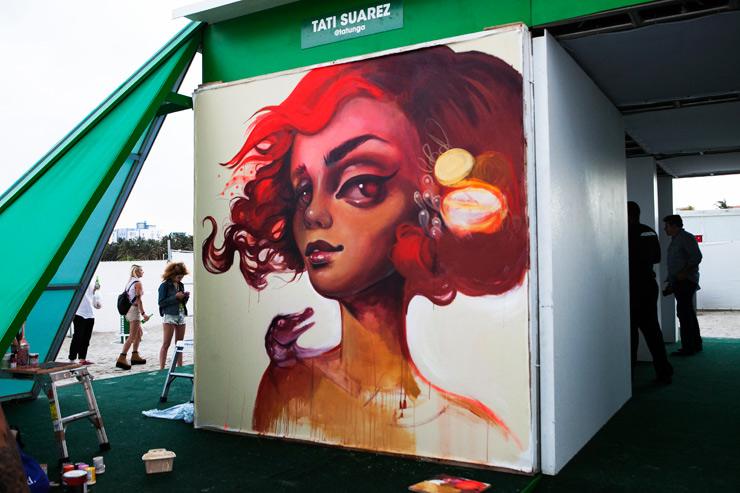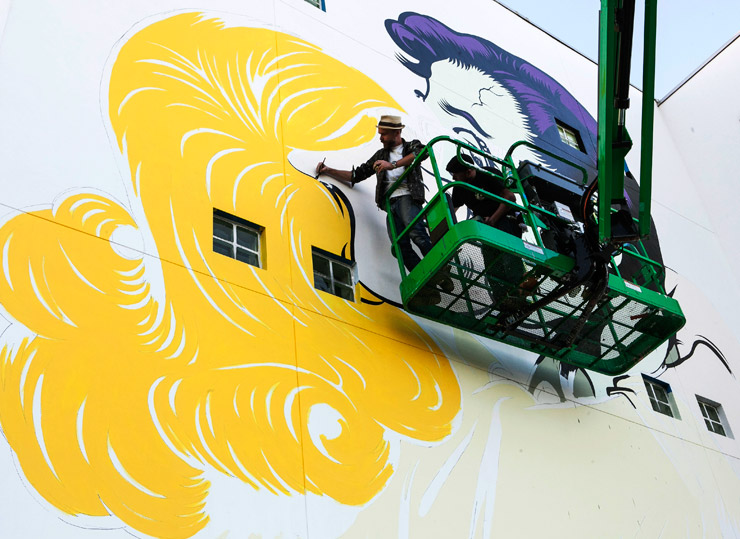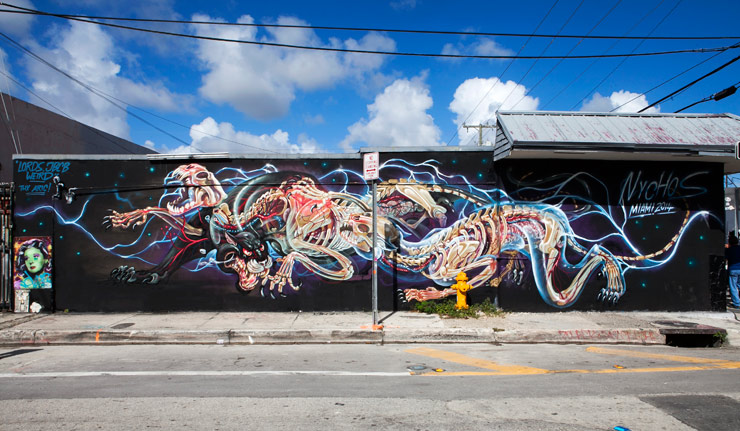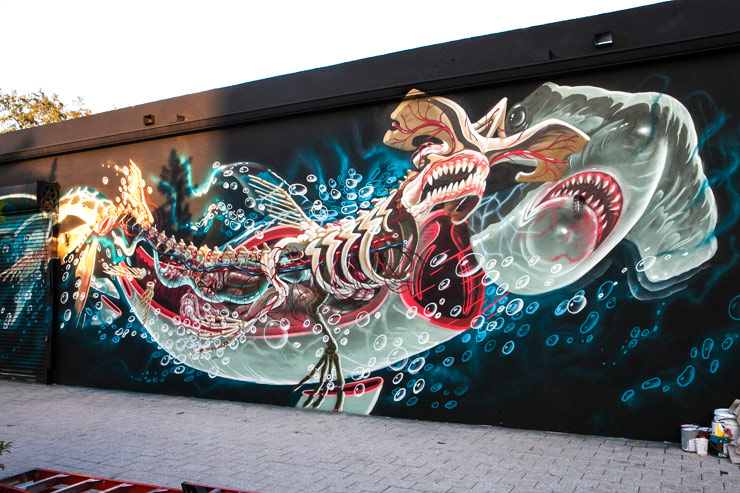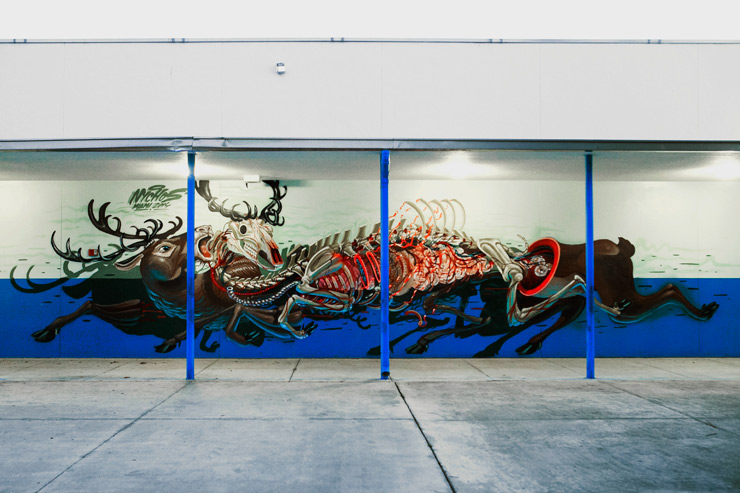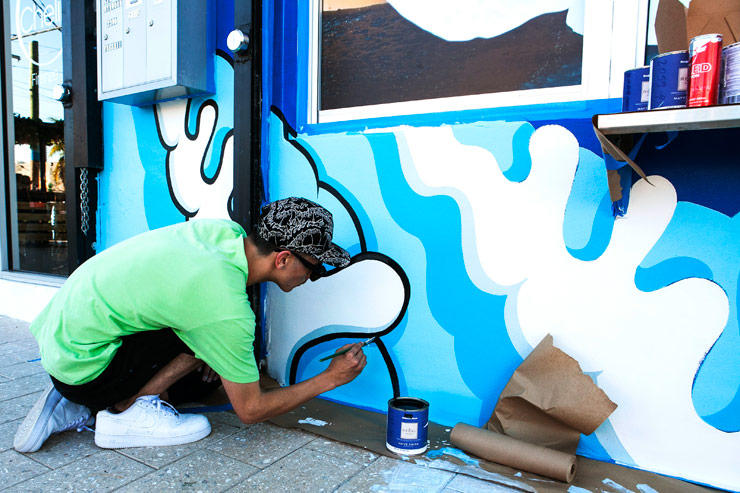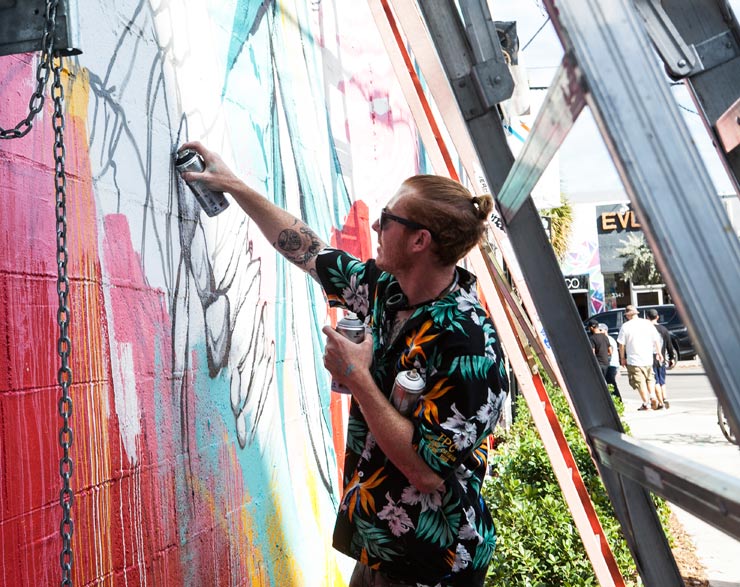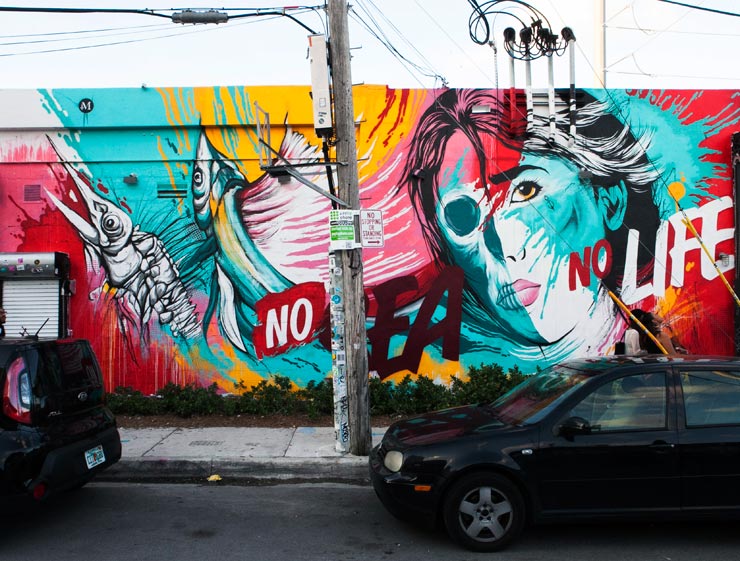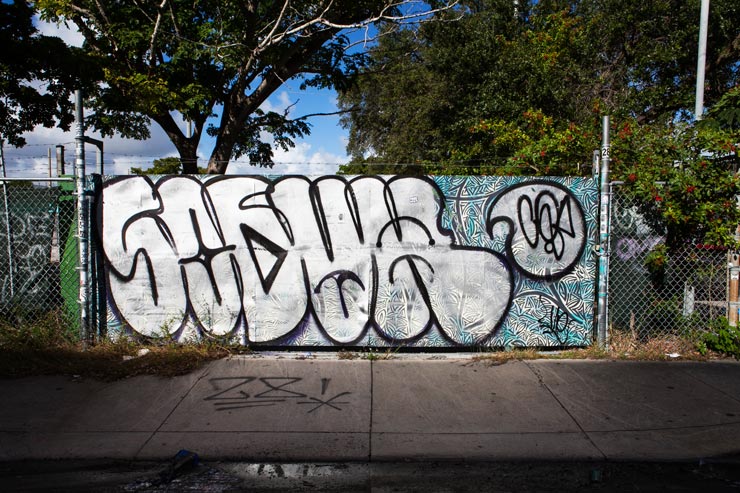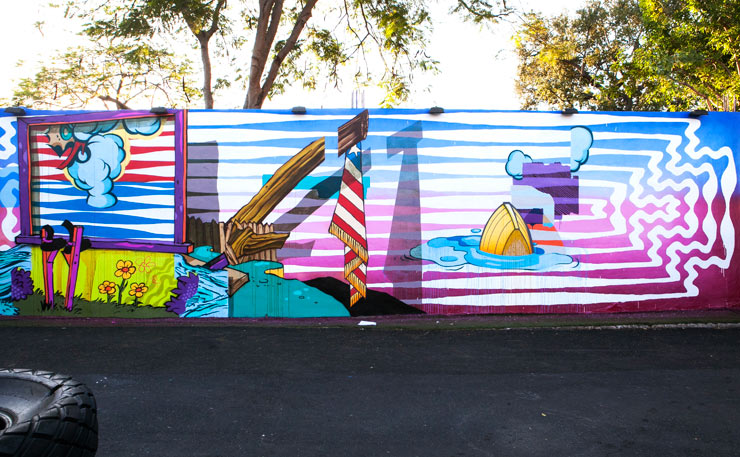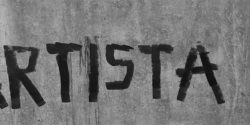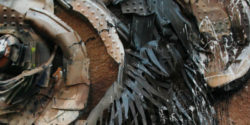An interdisciplinary artist living in Brooklyn, Del Valle has been rendering figures and scenarios on walls here and in his native Chicago, San Antonio, Kansas City, Spartanburg – even at 5 Pointz, the graffiti holy place in Queens that was recently buffed and destroyed. A performance artist in the public sphere as well as painter, his complex stories run deep with his contemplations on an imbalanced world. His is an activist approach to tearing apart and rebuilding to reveal influences, emotions, and motivations. In these ways and others he is not unlike his selected subject, George Grosz, a pivotal figure in Berlin’s Dada movement.
A German artist known especially for his drawings of people as caricature during the roaring days and nights of Berlin’s 1920s, Grosz was acerbic, crude and corrosive in his depiction of corruption and abuse of power. Eventually moving to New York and settling down in Bayside, Queens, the artist continued his work as a painter and cultural critic. For his portrait of Grosz, Del Valle inserts the artist into Grosz’ own 1926 painting, Eclipse of the Sun, along with ex Chicago mayor Richard J. Daley and some headless businessmen. Too much to describe here, Grosz can speak for himself:
My drawings expressed my despair, hate and disillusionment, I drew drunkards; puking men; men with clenched fists cursing at the moon. … I drew a man, face filled with fright, washing blood from his hands … I drew lonely little men fleeing madly through empty streets. I drew a cross-section of tenement house: through one window could be seen a man attacking his wife; through another, two people making love; from a third hung a suicide with body covered by swarming flies. I drew soldiers without noses; war cripples with crustacean-like steel arms; two medical soldiers putting a violent infantryman into a strait-jacket made of a horse blanket … I drew a skeleton dressed as a recruit being examined for military duty. I also wrote poetry. —Grosz Friedrich, Otto (1986). [note] Before the Deluge. USA: Fromm International Publishing Corporation. pp. 37. [/note]
“I believe art is inherently powerful,” says Del Valle, “and that power can be used to reflect and reshape reality. Much like I aspire to do, George Grosz used satirical imagery to call attention to social inequalities while blurring the line between illustration and painting. His poignant content and aesthetic seems just as relevant today as it did in post 1920’s Berlin.”
Esteban Del Valle in Brooklyn (photo © Jaime Rojo)
Esteban Del Valle in New York (photo © Jaime Rojo)
Check out the Facebook page for PERSONS OF INTEREST
See Full Press Release HERE
 BROOKLYN STREET ART LOVES YOU MORE EVERY DAY
BROOKLYN STREET ART LOVES YOU MORE EVERY DAY